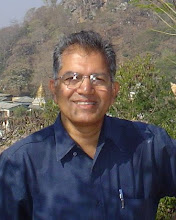I've heard of a phenomenology of the smile, but has someone, anyone, worked out a phenomenology of the eye? I was staring at the curtain in my office, and suddenly one of the designs began looking like an eye. I found myself wondering: what is it that is so fascinating about the eye? Why are we so drawn to the eyes? The eyes are points in the human body that are actually some sort of opening. There is a mysterious depth to them: the white cornea, within which the darker iris, and at the centre the aperture, the pupil that actually lets in light on to the retina.... But none of this really accounts for the way the eye pulls, the way it is, in many ways, the centre of a person, and certainly of a person's face... (though sometimes I find myself looking at the mouth). The way the eyes register and express a whole range of emotions. The dull eye of one who is bored, the vacant eye of one who does not understand, or is perhaps, temporarily or more permanently, absent; the bright eyes of one who understands, who catches the point; the scornful eye, the disdainful look; the penetrating eye that sees through you; the compassionate eye, the angry eye, the eye lit up with passion; the interested eye, the bored eye...
And are we talking only about the human eye? What about animal eyes? Is there something analogous there? Perhaps there is....
And are we talking only about the human eye? What about animal eyes? Is there something analogous there? Perhaps there is....
